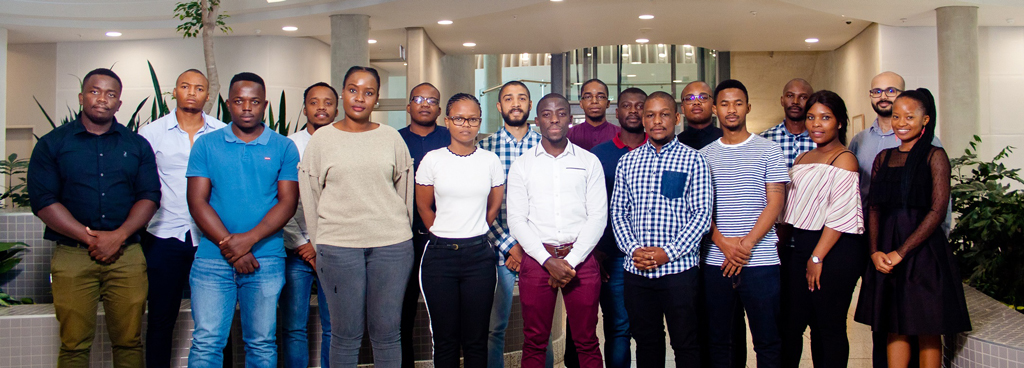
HIGHLIGHTS OF SANRAL’s TECHNICAL EXCELLENCE ACADEMY
Observing candidates grow and develop through workintegrated learning is but one of the highlights of SANRALs Technical Excellence Academy (TEA), according to Kobus van der Walt, who heads the programme.
In February this year, SANRAL welcomed 18 new engineering candidates to its training academy in the Eastern Cape – pushing the number of engineers interned at its TEA in Nelson Mandela Bay to 31, with another 15 expected to join next year.
The candidate engineers are from various provinces in South Africa. They have been divided into project design teams. Most have joined the design academy on the TEA premises for 21 months. Candidates who joined the TEA immediately after university will gain on-site work experience after their design and laboratory training.
Thirteen female and 40 male engineering candidates have completed training at the academy since its establishment in 2014. This year, five female candidates joined. Candidates are provided the opportunity to be of service to the SANRAL regional project managers as part of their on-the-job training. “They participate in technical clusters, focus groups and special projects. We adapt our purpose within the Southern Region as needed,” Van der Walt said.
The TEA candidate engineers also take on design projects that have the possibility of remaining “in-house”. “Another highlight,” said Van der Walt, “is to learn of the professional registration of former interns on a regular basis.” The overall benefits of the TEA are twofold. Firstly, engineering graduates are provided with much-needed training to qualify for professional registration, which means they are likely to achieve the training outcomes required by the Engineering Council of South Africa (ECSA) sooner than candidates not in a similar enabling environment.
Secondly, SANRAL benefits from the programme by having access to an increasing pool of highly talented candidate engineers and technologists while they are establishing themselves in the industry.
The training entails geometric design, traffic analysis and capacity, materials investigation and usage, pavement evaluation and materials design, stormwater drainage (including sub-surface drainage), among others.
Andrew Van Gruting, senior mentor at the TEA, said: “During the training, we have the solemn obligation to provide the environment required to achieve 11 ECSA outcomes.”
FUTURE PLANS
A joint working group has been established with ECSA, working towards academy certification.
During the next two years, SANRAL will work with ECSA to draft documents that will lead to certification of training programmes not just for SANRAL but for other eligible companies too. Candidates will still have to apply to ECSA to become a registered engineer, but the progress will be monitored more closely.
The goal is to build a second building in the next five years to accommodate all the TEA candidates.
WHAT TEA CANDIDATES ARE WORKING ON…
- The R410 upgrade between Queenstown and Cacadu (formerly Lady Frere)
- District road 08023 between Flagstaff and the proposed N2 WC interchange at Mkambathi
- N2 Section 8 encompassing the future Knysna and Plettenberg Bay bypasses
- Pikoli and Qhorha road upgrading community development project, to be implemented through a construction manager
- R75 Section 2 Upgrade from Uitenhage to Kirkwood
/ YOUTH DEVELOPMENT PROGRAMMES
- Regional Freeway Management System
- Assistance to Professional Service Provider for the Regional Slope Management System
- Assistance to Project Manager for the Regional Road Signs Programme
- Route Determination projects for alleviation of bottlenecks along key corridors
- Assistance on stakeholder engagement for the Regional Freeway Management System